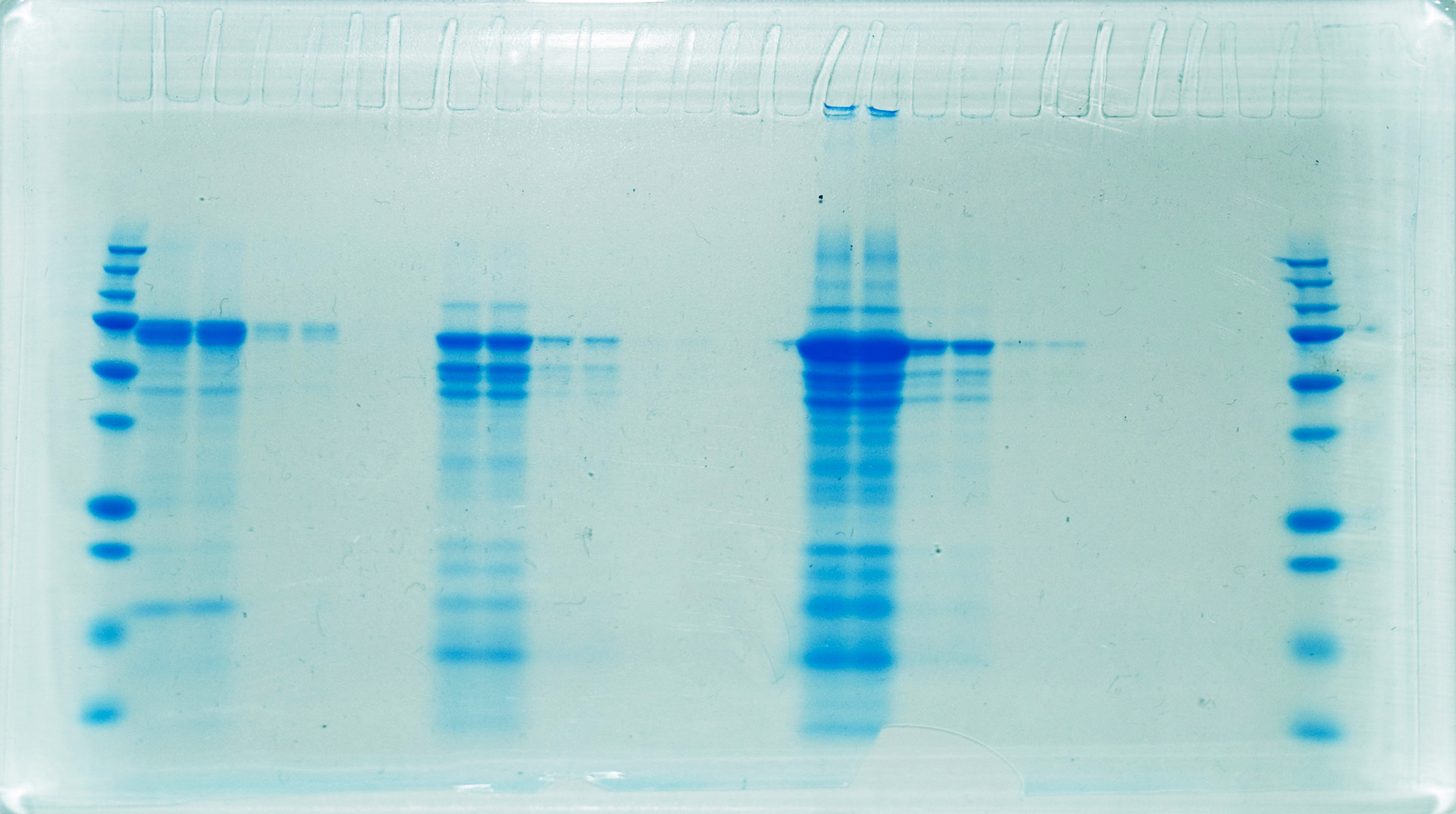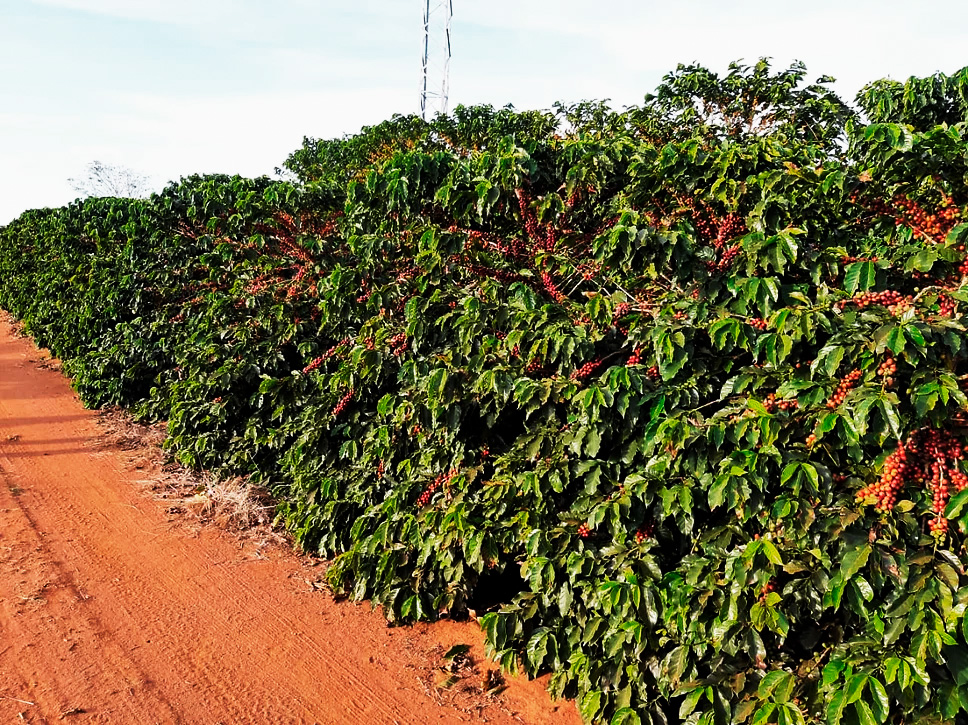Since 2001, plant breeders have been able to register arabica varieties for protection under the Cultivar Protection Law (Vieira et al 2010). This has led to a large increase in named cultivars, with, for example, seventeen cultivars of Catuaí listed in the National Register of Cultivars.
Traditionally, breeders distinguish between cultivars by means of visible features of the plant. This is challenging in coffee because the plant takes several years to mature and bear fruit, and its features have to be evaluated at different stages of maturation. Cultivars can be differentiated more precisely by means of molecular markers, which can be biochemical (e.g., indicated by the presence of a specific protein) or genetic. However, the Cultivar Protection Law does not specify what markers should be used to distinguish between varieties (Vieira et al 2010).
 SDS-PAGE, a technique used to identify proteins by molecular weight, can allow researchers to distinguish between cultivars
SDS-PAGE, a technique used to identify proteins by molecular weight, can allow researchers to distinguish between cultivars
Modern cultivars in Brazil are frequently bred (or selected from existing varieties) for specific traits. This allows producers to choose cultivars that suit the particular conditions on their farms. For example, farmers struggling with leaf rust in Cerrado regions might choose to plant Guará, a variety selected from Catucaí, which shares Catucaí’s rust المقاومة but is adapted to drier climates (Fundação Procafé 2022). Farmers can also choose varieties that ripen at different times of year, in order to avoid problems caused by rainfall or to spread out the work at harvest time.
 Guara, a selection from Catucaí adapted to the dry climate of the cerrado. Photo courtesy of Fundação Procafé
Guara, a selection from Catucaí adapted to the dry climate of the cerrado. Photo courtesy of Fundação Procafé
Increasingly, plant breeders are looking for desirable genes in species of coffee beyond arabica and canephora. Among the 124 known species of coffee (Davis et al 2019),